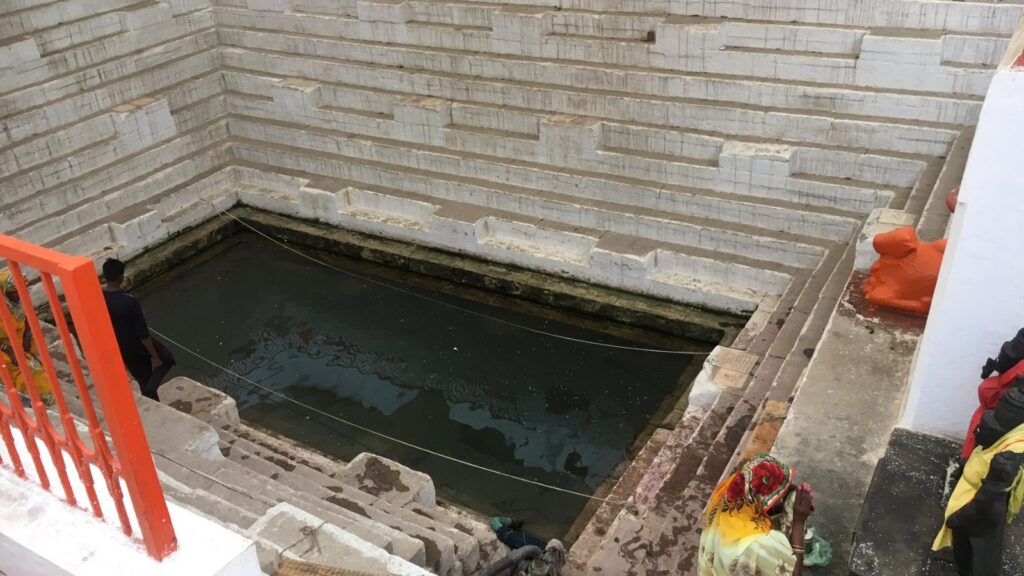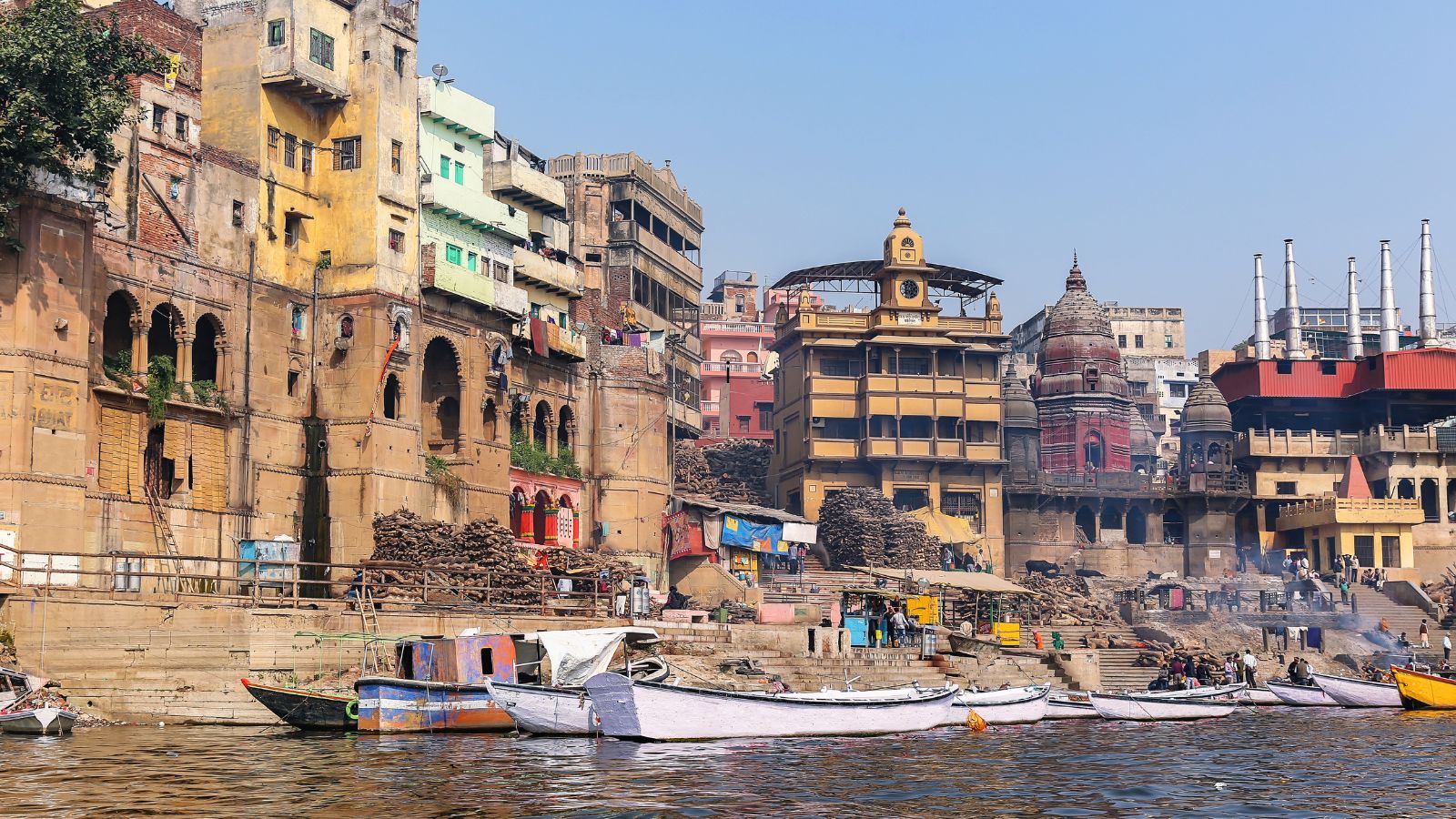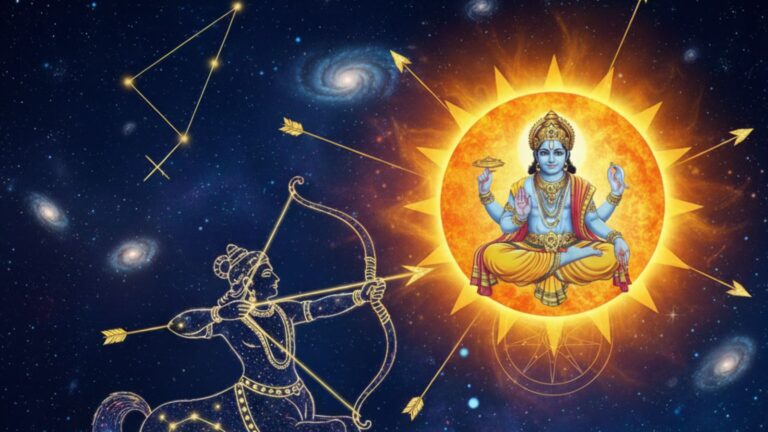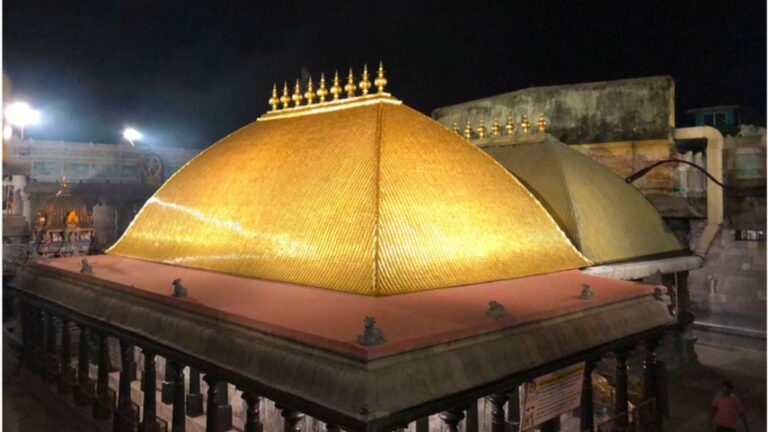Manikarnika Ghat in Varanasi is one of Hinduism’s holiest places, symbolically regarded as the meeting point of creation and destruction. As the busiest cremation ground on the banks of the Ganga, it is believed that a soul cremated here attains moksha — liberation from the cycle of birth and rebirth. Because death in Kashi is thought to guarantee liberation, cremations take place here continuously, day and night, without pause. The name “Manikarnika,” meaning “jeweled earring,” refers to the legends tied to both the ghat and its adjacent sacred tank.
While Manikarnika is closely identified with its cremation ground, its most ancient association is with Manikarnika Kund, also called Chakrapushkarini. According to the Kashi Khanda (a section of the Skanda Purana), this tank existed before the descent of the Ganga. When Bhagiratha brought the river to earth, its waters flooded the pond, leaving part of it visible — a reminder of Kashi’s timeless sanctity, for the kund is considered older than the river itself. Located just north of the ghat, the kund remains central to myth and ritual.
Over the centuries, floods from the Ganga often buried the kund in silt, only to be unearthed by pilgrims. This cycle of submergence and renewal echoes the cosmic rhythm of creation and dissolution. Today, only a fraction of the kund survives, enclosed within stone walls.
Vishnu’s Austerities and the Birth of the Kund
In the beginning, when there was only darkness, the formless Brahman manifested as Ishwara, Lord Shiva, accompanied by Shakti, also called Prakriti (matter) and Maya (illusion). Together they created Kashi, a bliss-filled city spanning five kroshas*. Here, in the Ananda Vana** (Forest of Bliss), they resolved to bring forth a being who would create, preserve, and protect the universe. Vishnu was thus born, embodying all noble qualities.
To prepare for creation, Vishnu undertook severe austerities. With his discus (chakra), he carved a pond and filled it with the sweat of his penance. This became the Chakrapushkarini Kund. For thousands of years, he meditated there until his devotion radiated such heat that the waters became sanctified.

Chakrapushkarini, near Manikarnika Ghat
Moved by his penance, Shiva and Shakti appeared before him and offered a boon. Vishnu asked for nothing but to remain eternally in Shiva’s presence. Pleased by his humility, Shiva consented, and in a moment of joyous wonder shook his head. As he did, a jeweled earring slipped from his ear and fell into the sacred kund. From that moment, the pond was called Manikarnika — the “Jeweled Earring.” Other legends say it was Parvati’s ornament that dropped, or that both Shiva’s crest-jewel and Parvati’s jewel fell together. Some even tell that it was Vishnu’s own earring, shaken loose as he bowed his head in awe.
The Fall of Sati’s Earring
In another telling, when Sati immolated herself at Daksha’s yajna, a distraught Shiva wandered with her corpse. Vishnu, to restore cosmic balance, used his Sudarshana Chakra to disperse her body and ornaments across the earth, each place becoming a Shakti Peetha. Kashi is believed to be one such, where Sati’s earring (kundal) fell into the Manikarnika Kund, its sanctity affirmed by the nearby Vishalakshi Temple.
Manikarnika: Where Creation Meets Liberation
The legends of Manikarnika weave together the origins and transcendence of life and death. Here, the world is believed to have first formed — with Vishnu’s sweat, Shiva’s jewel, and Shakti’s grace mingling in the waters of creation. It is also the site where cremation fires free souls from bondage. Devotees believe Lord Shiva leans close to the dying at Manikarnika, whispering the Taraka Mantra (“Om Namah Shivaya”) — a divine chant that carries the soul across the ocean of worldly existence into liberation.
The sacred fires at Manikarnika are tended by the Doms, the hereditary caste of cremation keepers regarded as descendants of Shiva’s attendants. No pyre is lit with a matchstick here; instead, the flame is drawn from a hearth said to have been burning continuously for centuries. The Doms provide this fire, charging a fee at their discretion, and their stewardship ensures the eternal flames, guiding countless souls to freedom.
Manikarnika is the place where time itself dissolves, where the first drop of sweat from Vishnu’s penance meets the final breath of a mortal, and where the flames that consume the body kindle the soul’s passage into eternity.
* Krosha: Roughly two miles, or about 3.2 KM
** Ananda Vana is one of the ancient names of Kashi
Chakra Pushkarini Manikarnika Kund image credits: Dr V N Mishra, Varanasi



